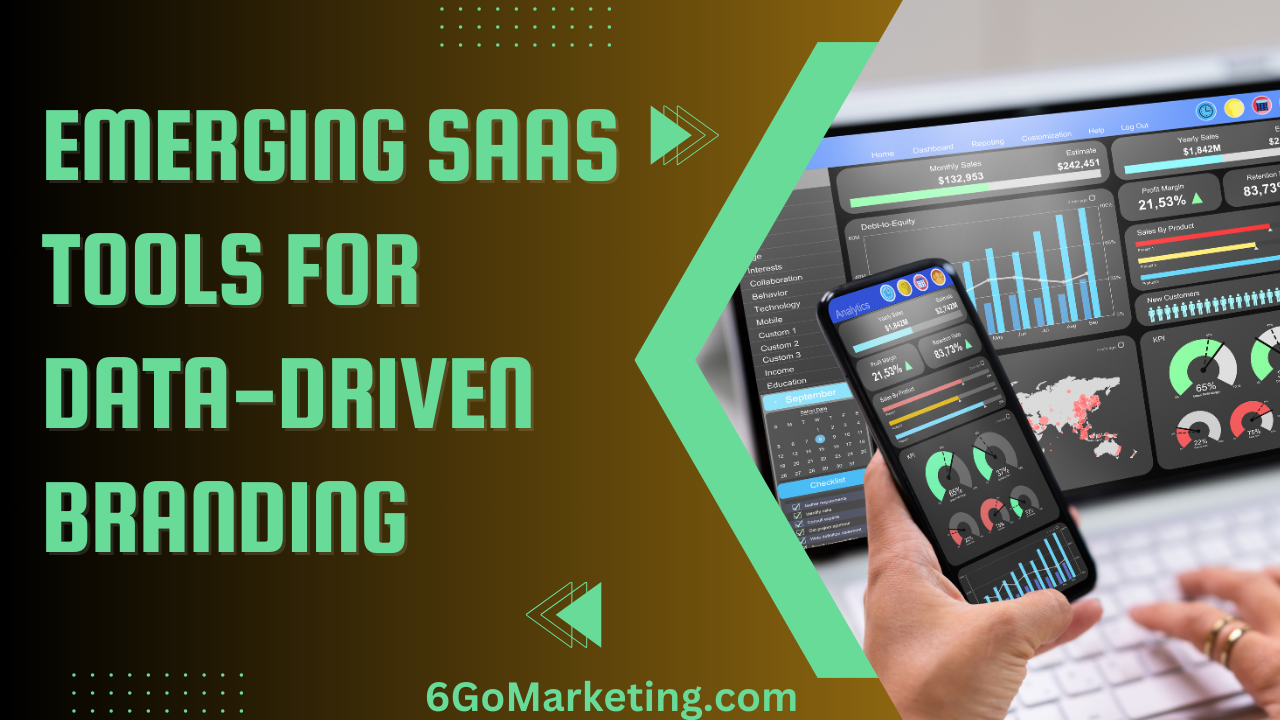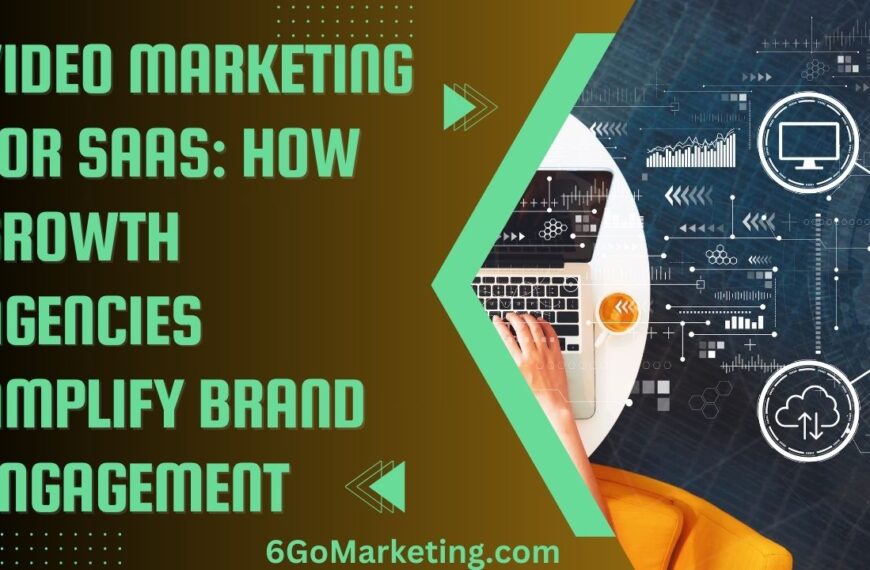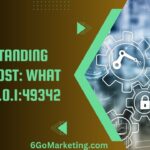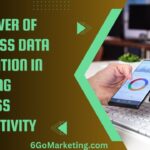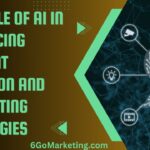In today’s digital-first world, data has become the backbone of effective branding. Companies that leverage data-driven strategies are better positioned to understand their audience, tailor their messaging, and create a brand experience that resonates with consumers. With the rise of Software as a Service (SaaS) tools, businesses now have access to powerful platforms that enable them to collect, analyze, and act on data more efficiently than ever before.
This blog post explores emerging SaaS tools that are transforming data-driven branding, helping companies make smarter decisions, optimize their strategies, and build stronger connections with their audience.
The Importance of Data-Driven Branding
Before diving into the tools themselves, it’s essential to understand why data-driven branding is so critical in today’s marketplace. Traditional branding relied heavily on intuition, creativity, and broad market research. While these elements are still important, the modern branding landscape demands a more scientific approach, where decisions are guided by real-time data and insights.
Data-driven branding allows companies to:
- Understand Audience Behavior: By analyzing customer data, brands can gain insights into what their audience wants, needs, and values. This understanding helps in crafting messages that resonate and engage. Tools like QR codes are particularly useful in collecting data, as they allow brands to track customer interactions in physical and digital spaces.
- Personalize Marketing Efforts: With data, brands can deliver personalized experiences to their customers, increasing relevance and engagement.
- Measure Brand Performance: Data allows companies to track key performance indicators (KPIs) and adjust their strategies in real-time.
- Optimize Brand Strategy: Through continuous analysis, brands can identify what’s working and what isn’t, enabling them to refine their approach for better results.
According to a study by McKinsey, data-driven organizations are 23 times more likely to acquire customers, six times as likely to retain customers, and 19 times as likely to be profitable.
Table 1: Benefits of Data-Driven Branding
| Benefit | Description | Impact on Business |
|---|---|---|
| Understanding Audience Behavior | Gaining insights into customer needs and preferences | More targeted messaging, higher engagement |
| Personalizing Marketing Efforts | Delivering tailored experiences based on customer data | Increased relevance, improved customer loyalty |
| Measuring Brand Performance | Tracking KPIs and adjusting strategies in real-time | Better decision-making, optimized ROI |
| Optimizing Brand Strategy | Refining branding efforts based on continuous analysis | Enhanced effectiveness, sustained competitive advantage |
Emerging SaaS Tools for Data-Driven Branding
The rise of SaaS tools has revolutionized the way brands collect and utilize data. These tools offer a wide range of functionalities, from social listening and customer analytics to AI-driven content creation and sentiment analysis. Below, we explore some of the most promising SaaS tools that are enabling data-driven branding.
- Brandwatch: Social Listening and Consumer IntelligenceBrandwatch is a leading SaaS platform for social listening and consumer intelligence. It enables brands to monitor conversations across social media platforms, forums, blogs, and other online channels. By analyzing this data, brands can gain insights into consumer sentiment, identify emerging trends, and understand how their brand is perceived in real-time.Key features of Brandwatch include:
- Social Listening: Track and analyze mentions of your brand, competitors, and industry keywords across the web.
- Audience Analysis: Understand the demographics, interests, and behaviors of your audience.
- Sentiment Analysis: Gauge the overall sentiment of online conversations about your brand.
- Trend Identification: Discover emerging trends and topics within your industry.
- Sprinklr: Unified Customer Experience ManagementSprinklr is a SaaS platform that provides a unified approach to customer experience management across multiple channels. It offers tools for social media management, customer care, content marketing, and more, all powered by AI-driven analytics. Sprinklr helps brands deliver consistent, personalized experiences across every touchpoint, informed by data.Key features of Sprinklr include:
- Unified Customer Data: Centralize customer data from various sources to create a comprehensive view of each customer.
- AI-Powered Insights: Leverage AI to identify trends, predict customer behavior, and optimize brand interactions.
- Content Management: Create, schedule, and manage content across multiple channels from a single platform.
- Customer Care: Monitor and respond to customer inquiries and issues in real-time, ensuring a positive brand experience.
- HubSpot: Inbound Marketing and AnalyticsHubSpot is a comprehensive inbound marketing, sales, and CRM platform that helps businesses attract, engage, and delight customers. HubSpot’s analytics and reporting tools provide valuable insights into how marketing efforts are performing, allowing brands to optimize their strategies based on data.Key features of HubSpot include:
- Marketing Automation: Automate email marketing, social media posting, and lead nurturing workflows.
- CRM Integration: Track customer interactions and manage relationships across the entire customer journey.
- Content Strategy: Plan and optimize content based on keyword research and SEO best practices.
- Analytics and Reporting: Measure the performance of marketing campaigns, track KPIs, and generate custom reports.
- Canva: Data-Driven Visual BrandingCanva is a design platform that makes it easy for businesses to create professional-quality graphics, presentations, and other visual content. While Canva is primarily known for its design capabilities, it also offers data-driven tools that help brands create visuals that resonate with their audience.Key features of Canva include:
- Brand Kit: Store brand assets such as logos, fonts, and color schemes for consistent visual branding.Templates and Design Tools: Access thousands of templates tailored to different industries and use cases.Analytics Integration: Track the performance of your visuals across social media and other platforms.Collaboration: Work with team members in real-time to create and refine designs.
- Segment: Customer Data InfrastructureSegment is a customer data platform (CDP) that allows businesses to collect, unify, and activate customer data from multiple sources. By centralizing data from websites, apps, and other channels, Segment helps brands create a single source of truth for customer information, enabling more personalized and data-driven marketing.Key features of Segment include:
- Data Collection: Collect data from websites, mobile apps, and third-party tools in real-time.
- Identity Resolution: Merge customer data from different sources to create a unified customer profile.
- Audience Segmentation: Segment customers based on behavior, demographics, and other attributes for targeted marketing.
- Data Activation: Activate customer data across various marketing, sales, and analytics tools.
Table 2: Emerging SaaS Tools for Data-Driven Branding
| Tool | Key Features | Impact on Branding |
|---|---|---|
| Brandwatch | Social listening, sentiment analysis, trend identification | Real-time consumer insights, improved brand perception |
| Sprinklr | Unified customer data, AI-powered insights, content management | Enhanced customer experience, consistent brand messaging |
| HubSpot | Marketing automation, CRM integration, analytics | Optimized inbound marketing, data-driven content strategy |
| Canva | Brand kit, templates, analytics integration | Consistent visual branding, engaging content creation |
| Segment | Data collection, identity resolution, audience segmentation | Personalized marketing, improved customer retention |
The Role of AI and Machine Learning in Data-Driven Branding
Artificial intelligence (AI) and machine learning (ML) are playing an increasingly important role in data-driven branding. These technologies enable SaaS tools to analyze vast amounts of data quickly, identify patterns, and make predictions that inform branding decisions. Here’s how AI and ML are enhancing data-driven branding:
- Predictive Analytics:
- AI-driven predictive analytics help brands anticipate future trends and customer behavior. By analyzing historical data, AI can predict which marketing strategies are likely to succeed and identify potential risks. This enables brands to make proactive decisions that align with their long-term goals.
- For example, AI can analyze customer purchase history to predict which products are most likely to be in demand during a particular season. Brands can then tailor their marketing campaigns to promote these products, increasing the likelihood of sales.
- Personalization at Scale:
- Personalization is key to effective branding, but delivering personalized experiences at scale can be challenging. AI and ML make it possible to analyze customer data in real-time and deliver personalized content, recommendations, and offers based on individual preferences and behaviors.
- According to a study by Epsilon, 80% of consumers are more likely to make a purchase when brands offer personalized experiences. AI-powered SaaS tools enable brands to deliver these personalized experiences at scale by analyzing customer data and automating the delivery of tailored content, product recommendations, and marketing messages. This level of personalization not only enhances customer satisfaction but also drives higher conversion rates and brand loyalty.
- Sentiment Analysis:
- Sentiment analysis is a powerful AI-driven tool that helps brands understand how consumers feel about their brand, products, or services. By analyzing social media posts, reviews, and other forms of user-generated content, sentiment analysis tools can gauge the overall sentiment—positive, negative, or neutral—associated with a brand. This insight is invaluable for managing brand reputation and refining messaging strategies.
- For instance, if sentiment analysis reveals a surge in negative feedback about a recent product launch, a brand can quickly respond by addressing the issues and adjusting its communication strategy. This proactive approach helps maintain a positive brand image and prevents potential crises.
- Content Generation and Optimization:
- AI and ML are also transforming content creation by automating the generation of data-driven content. Tools like GPT-3 (Generative Pre-trained Transformer 3) can create high-quality written content based on specific guidelines and data inputs. This allows brands to scale their content marketing efforts while maintaining consistency and relevance.
- Additionally, AI-powered tools can analyze the performance of existing content and provide recommendations for optimization. For example, AI can suggest improvements to blog posts, social media updates, and email campaigns based on factors such as keyword usage, readability, and audience engagement.
- Real-Time Analytics and Decision-Making:
- In today’s fast-paced digital landscape, real-time data is crucial for making informed decisions. AI and ML-powered SaaS tools enable brands to monitor key metrics in real-time, such as website traffic, social media engagement, and customer behavior. This real-time insight allows brands to respond quickly to changing market conditions, optimize campaigns on the fly, and capitalize on emerging opportunities.
- For example, if a brand notices a sudden spike in traffic to a particular product page, it can use real-time data to increase ad spend, adjust promotional offers, or highlight the product on social media to maximize conversions.
Table 3: The Role of AI and ML in Data-Driven Branding
| Application | Description | Impact on Branding |
|---|---|---|
| Predictive Analytics | Forecasting future trends and customer behavior | Proactive decision-making, reduced risk |
| Personalization at Scale | Delivering tailored experiences to individual customers | Higher engagement, improved customer loyalty |
| Sentiment Analysis | Gauging consumer sentiment through social media and reviews | Better reputation management, informed messaging strategies |
| Content Generation and Optimization | Automating content creation and refining existing content | Scaled content marketing, consistent brand messaging |
| Real-Time Analytics and Decision-Making | Monitoring key metrics and responding quickly to changes | Enhanced agility, optimized marketing performance |
Case Studies: Successful Data-Driven Branding with SaaS Tools
To illustrate the impact of data-driven branding enabled by SaaS tools, let’s examine a few case studies of companies that have successfully implemented these strategies.
- Coca-Cola: Leveraging AI for Personalization
- Coca-Cola, one of the world’s most iconic brands, has embraced data-driven branding by using AI to deliver personalized experiences. The company leverages data from social media, loyalty programs, and customer interactions to tailor its marketing campaigns to different audience segments. For example, Coca-Cola’s “Share a Coke” campaign used AI to analyze consumer data and identify popular names for personalized bottle labels.
- The campaign was a massive success, leading to a 2% increase in U.S. sales and a significant boost in brand engagement. By using AI-driven personalization, Coca-Cola was able to connect with consumers on a deeper level and create a memorable brand experience.
- Nike: Data-Driven Content and Customer Engagement
- Nike has long been a leader in data-driven branding, using customer data to inform its marketing and product development strategies. Nike’s NikePlus membership program collects data on customers’ purchasing behavior, workout habits, and preferences. This data is then used to deliver personalized product recommendations, exclusive offers, and targeted content.
- Additionally, Nike uses AI to analyze customer interactions on social media and its mobile app. By understanding what resonates with its audience, Nike can create content that drives engagement and loyalty. For instance, Nike’s personalized training plans and motivational content on the Nike Training Club app have contributed to increased customer satisfaction and brand loyalty.
- Spotify: Harnessing Data for Hyper-Personalization
- Spotify is a prime example of a brand that has mastered data-driven branding. The music streaming giant uses vast amounts of data to create hyper-personalized experiences for its users. Spotify’s algorithms analyze listening habits, preferences, and behavioral data to curate personalized playlists, such as “Discover Weekly” and “Release Radar.”
- Spotify also uses data to inform its marketing campaigns. For example, its annual “Wrapped” campaign provides users with personalized insights into their listening history over the past year. This campaign has become a viral sensation, driving social media engagement and reinforcing Spotify’s brand identity as a personalized music service.
- As a result of its data-driven approach, Spotify has grown its user base to over 365 million monthly active users worldwide and continues to lead the music streaming market.
Table 4: Case Studies of Data-Driven Branding Success
| Company | SaaS Tools/Strategies Used | Key Results Achieved |
|---|---|---|
| Coca-Cola | AI for personalization, social media analytics | 2% increase in U.S. sales, higher brand engagement |
| Nike | Customer data analysis, AI-driven content | Increased customer loyalty, enhanced brand experience |
| Spotify | Data-driven personalization, algorithmic curation | 365 million monthly active users, viral marketing campaigns |
Best Practices for Implementing Data-Driven Branding with SaaS Tools
To maximize the benefits of data-driven branding, companies should follow best practices when implementing SaaS tools and strategies. Here are some key recommendations:
- Start with Clear Objectives:
- Before deploying SaaS tools, it’s important to define clear branding objectives. Whether it’s improving customer engagement, increasing brand awareness, or boosting sales, having specific goals will guide your data collection and analysis efforts.
- Invest in the Right Tools:
- Choose SaaS tools that align with your branding objectives and business needs. Consider factors such as ease of integration, scalability, and the ability to provide actionable insights. It’s also important to ensure that the tools you choose are user-friendly and can be easily adopted by your team.
- Focus on Data Quality:
- The effectiveness of data-driven branding depends on the quality of the data you collect. Ensure that your data is accurate, up-to-date, and relevant. Regularly clean and validate your data to avoid making decisions based on incomplete or incorrect information.
- Leverage AI and Automation:
- Use AI and automation to scale your branding efforts and deliver personalized experiences at scale. Automating routine tasks, such as data analysis and content creation, allows your team to focus on strategic initiatives and creative work.
- Continuously Monitor and Optimize:
- Data-driven branding is an ongoing process. Continuously monitor your performance metrics and use real-time analytics to make adjustments as needed. Regularly test and optimize your strategies to ensure they remain effective in a rapidly changing market.
- Ensure Data Privacy and Compliance:
- As you collect and use customer data, it’s essential to prioritize data privacy and comply with regulations such as GDPR and CCPA. Implement robust data security measures and be transparent with customers about how their data is used.
Table 5: Best Practices for Data-Driven Branding
| Best Practice | Description | Benefit for Branding |
|---|---|---|
| Start with Clear Objectives | Define specific goals for data-driven branding | Guided data collection, focused strategy |
| Invest in the Right Tools | Choose SaaS tools that align with business needs | Efficient implementation, actionable insights |
| Focus on Data Quality | Ensure data is accurate, up-to-date, and relevant | Reliable decision-making, improved outcomes |
| Leverage AI and Automation | Use AI to scale branding efforts and deliver personalized experiences | Increased efficiency, consistent brand messaging |
| Continuously Monitor and Optimize | Regularly test and refine strategies | Adaptability, sustained competitive advantage |
| Ensure Data Privacy and Compliance | Prioritize data security and regulatory compliance | Maintained trust, reduced legal risk |
The Future of Data-Driven Branding with SaaS Tools
As technology continues to evolve, the future of data-driven branding will be shaped by new innovations in AI, machine learning, and data analytics. Here are some trends that will influence the next generation of SaaS tools for branding:
- Advanced Predictive Analytics:
- The next wave of SaaS tools will likely feature even more advanced predictive analytics capabilities, allowing brands to forecast customer behavior with greater accuracy. This will enable more proactive decision-making and refined targeting strategies.
- AI-Driven Creative Optimization:
- AI will play a larger role in optimizing creative elements such as ad copy, visuals, and video content. Future SaaS tools may offer real-time suggestions for improving creative assets based on performance data, allowing brands to continually refine their messaging.
- Integration of Augmented Reality (AR) and Virtual Reality (VR):
- AR and VR technologies are becoming more integrated into branding experiences. SaaS tools that support AR and VR content creation will enable brands to deliver immersive experiences that resonate with tech-savvy audiences.
- Greater Emphasis on Ethical AI:
- As AI becomes more central to branding strategies, there will be an increasing focus on ethical AI practices. Brands will need to ensure that their AI-driven tools are transparent, fair, and free from bias. This includes being mindful of how AI impacts customer privacy and making ethical considerations a key part of their data-driven strategies. Future SaaS tools will likely include features that help brands adhere to ethical standards and maintain consumer trust.
- Increased Use of Zero-Party Data:
- As privacy concerns grow, brands are turning to zero-party data—data that customers voluntarily share with brands. SaaS tools will increasingly support the collection and analysis of zero-party data, allowing brands to create highly personalized experiences without compromising privacy. This shift will help brands build stronger, trust-based relationships with their customers.
- Real-Time Collaboration and Integration:
- Future SaaS tools will offer enhanced collaboration features, allowing teams to work together seamlessly across different platforms and functions. Additionally, deeper integration with other business tools, such as CRM systems, marketing automation platforms, and e-commerce solutions, will create a more unified data ecosystem. This will enable brands to make faster, more informed decisions across all touchpoints.
- Voice and Visual Search Optimization:
- As voice and visual search technologies become more prevalent, SaaS tools will need to adapt. Brands will need to optimize their content for these new search methods, ensuring that their products and messaging are easily discoverable. SaaS tools will provide insights and analytics to help brands capitalize on voice and visual search trends.
Table 6: Future Trends in Data-Driven Branding with SaaS Tools
| Trend | Description | Impact on Branding |
|---|---|---|
| Advanced Predictive Analytics | Enhanced forecasting capabilities for customer behavior | More accurate targeting, proactive strategy adjustments |
| AI-Driven Creative Optimization | Real-time suggestions for improving creative content | Continuous refinement of brand messaging and visuals |
| Integration of AR and VR | Support for immersive experiences | Engaging, tech-forward branding campaigns |
| Ethical AI | Focus on transparency, fairness, and privacy | Maintained consumer trust, compliance with ethical standards |
| Increased Use of Zero-Party Data | Collection of voluntarily shared customer data | Deeper personalization, stronger customer relationships |
| Real-Time Collaboration and Integration | Seamless teamwork and platform connectivity | Faster decision-making, improved cross-functional alignment |
| Voice and Visual Search Optimization | Adapting to new search methods | Improved discoverability, expanded reach |
Conclusion
Data-driven branding is no longer a trend—it’s a necessity for businesses that want to stay competitive in a rapidly changing digital landscape. The emergence of powerful SaaS tools has made it easier than ever for brands to harness the power of data, delivering personalized, impactful experiences that resonate with their target audience.
By leveraging tools like Brandwatch, Sprinklr, HubSpot, Canva, and Segment, brands can gain deep insights into consumer behavior, optimize their strategies in real-time, and create a cohesive, data-driven brand identity.
The role of AI and machine learning in data-driven branding cannot be overstated. These technologies are transforming how brands predict trends, personalize content, and engage with customers. As we look to the future, innovations in predictive analytics, ethical AI, AR/VR integration, and voice/visual search optimization will further enhance the capabilities of SaaS tools, enabling brands to stay ahead of the curve.
To succeed in this new era of branding, companies must prioritize data quality, invest in the right SaaS tools, and continuously monitor and optimize their strategies. By embracing a data-driven approach and leveraging the latest SaaS technologies, brands can build stronger connections with their audience, drive growth, and achieve long-term success.
By following the best practices and trends outlined here, businesses can harness the full potential of data-driven branding and position themselves for continued success in a dynamic and ever-evolving marketplace.
